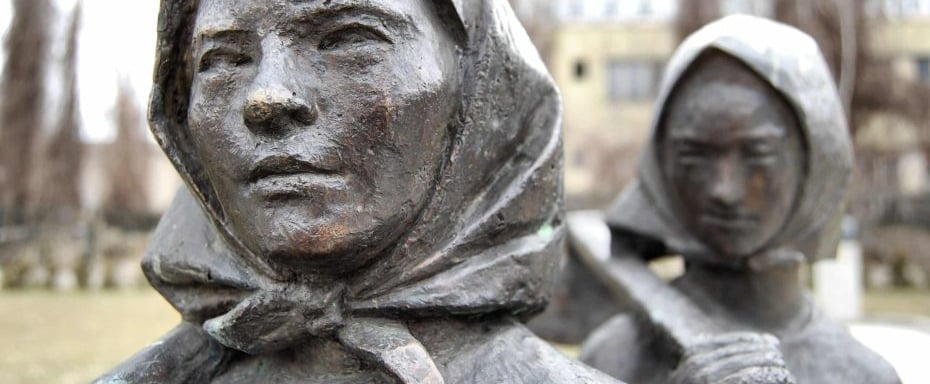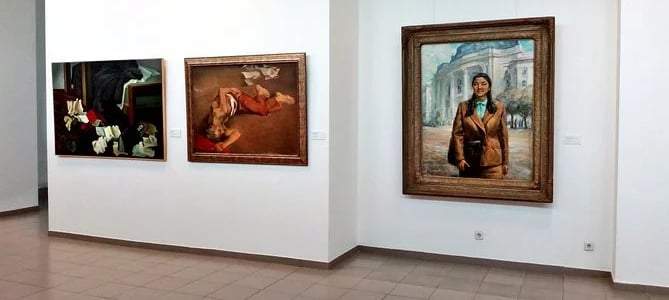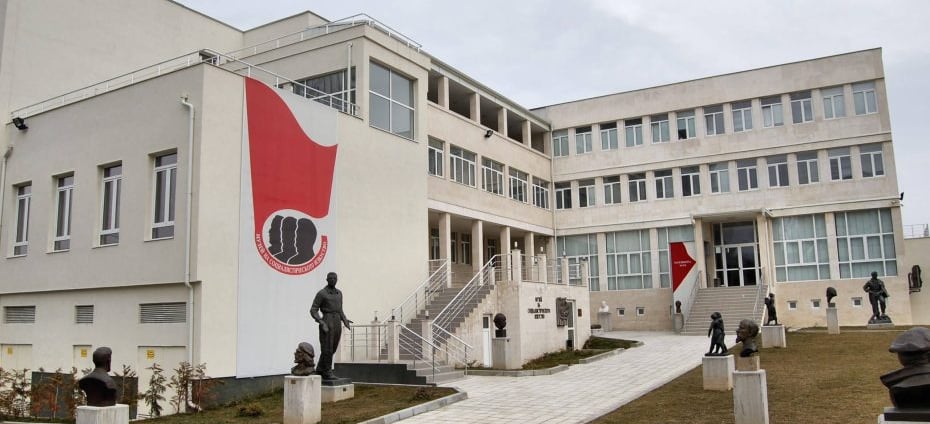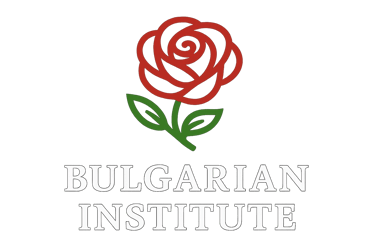Museum of Socialist Art – Sofia
A powerful exploration of Bulgaria’s socialist past, where monumental statues, everyday artifacts, and political narratives reveal a society shaped by ideology, ambition, and transformation.


A Time Capsule Nestled on the Threshold of the Capital
On the outskirts of Sofia, perched just beyond the city’s urban bustle, stands the Museum of Socialist Art—a place where monumental public sculpture meets intimate daily objects, where the pomp of political propaganda shares walls with posters, medals, and kitchenware. Opened in 2011, this museum occupies a former cultural palace, repurposed to preserve the vestiges of Bulgaria’s socialist era from 1944 to 1989. The building’s stark lines and expansive courtyard echo the aesthetic of that period’s artistic statecraft, while the works displayed inside—especially the massive statues of Lenin, Marx, and Bulgarian leaders—read as historical witnesses, both imposing and haunted.
The Museum of Socialist Art is not simply a nostalgia trip. It is a complex historical exercise in reinterpretation. As visitors step through its halls, they confront questions about power, memory, and identity. What happens when a regime commands beauty and fuses it with politics? What do these statues, slogans, and photographs tell us today about collective ambition and collective restraint? How do ordinary people remember and reckon with a time that shaped modern Bulgaria? The museum encourages dialogue rather than indoctrination, reflection rather than celebration. Its mission is to transform socialist art from propaganda into cultural heritage, bound by context and re-examined for meaning.
From Monumental Ideology to a Museum of Memory
During Bulgaria’s socialist period, art was tightly controlled. The state commissioned monuments, murals, and public sculptures designed to embody the values of socialism—collective labor, political loyalty, revolutionary lineage. Massive statues of Marx and Lenin were erected in public squares; murals celebrated industrial sites and heroic workers. Artists were sanctioned to align with socialist realism, and deviation was deemed subversive. When the Berlin Wall fell and socialist regimes collapsed, these artworks became orphaned—too large to dispose of, too politically charged to remain. Many were removed quietly; others were relegated to storage, often forgotten in backyards and factory courtyards.
The Museum of Socialist Art arose from this afterlife of aesthetics. Leaders in Sofia decided to create a dedicated institution to house these fugitive objects rather than erase them. The museum became a reverse excavation—bringing to light what was hidden after regime change. Lenin’s bronze figure once spread arms across the building’s grand wall; it now stands indoors, still commanding but no longer commanding belief. Rows of busts evoke a subterranean procession of ideologues. Behind glass, simpler artifacts—kitchen kettles embossed with party symbols, uniforms worn by pioneers, glossy posters—offer glimpses of life as it was experienced, not just declared.
This transformation from charged propaganda to dispassionate curation is itself a political gesture. The museum invites visitors to navigate irony, aspiration, memory, and disillusionment. It proposes that socialist art is not a closed chapter—but a contested field where personal histories and national legacies overlap.
A Sculpture Garden That Speaks Volumes
The museum’s outdoor section is its architectural overture: a courtyard dominated by larger-than-life statues, each one frozen mid-message. Marx stands with open book, Lenin with hand raised to lead, Bulgarian party leaders frozen in oratory poses. A monumental relief tower echoes Soviet mosaics, depicting workers marching in brilliant mosaic colors that once sparked civic pride. These sculptures now gather dust but retain an aura of ideological drama.
Visitors find themselves walking through political choreography, each statue both stubborn and theatrical. They evoke the cost of public art when it becomes a vehicle for collective identity rather than individual expression. They are simultaneous records of artistic skill and tools of messaging. The sculpture garden becomes an open-air exhibition about how aesthetics can absorb authority and how authority leaves an imprint in stone and metal.
Practical Information for Visitors
The Museum of Socialist Art is located in the western district of Lozenets, at 2 Bulgaria Boulevard, Sofia. It stands within a former government cultural venue, now repurposed as a museum and gallery space. It is accessible by metro (Sofia’s central station is a short bus ride away) and bus lines (10, 64, 88, 306, 505), with parking available on-site for visitors arriving by car.
The museum is open Wednesday through Sunday, from 11:00 AM to 7:00 PM, and on Monday and Tuesday by appointment only. It remains closed on national holidays such as Liberation Day (March 3), August 22, and December 24–26. Tickets can be purchased on-site or reserved online in advance. Standard admission is reasonable, with discounts for students, seniors, groups, and free entry for children under 7. English audio guides are available, with optional guided tours featuring English-, German-, Russian-, and French-speaking curators.
A small café in the lobby serves light refreshments, coffee, and Bulgarian pastries. The gift shop sells exhibition catalogues, posters featuring historical slogans, postcards of historic landmarks, and thematic souvenirs like pioneer scarves and vintage medals. The museum is wheelchair accessible, with elevators from floor to floor and ramps in the sculpture courtyard.
Visitors generally spend between one and two hours viewing the courtyard sculpture and interior galleries. For those interested in a deeper experience, the museum organizes monthly panel discussions, artist talks, and documentary screenings. Educational programs are available for school groups—including interactive workshops about visual propaganda and the ethics of representation.
Photography is allowed in the sculpture courtyard and certain galleries; flash may be restricted. The museum code requests respectful silence, especially near living-room style installations that prompt reflection. Free Wi‑Fi is available for visiting scholars and students requiring access to online archives.
Visit the official website here: https://museumsocialistart.bg
The Museum as a Site of Civic Memory
Locals and scholars view the Museum of Socialist Art as a civic asset—one that helps a society come to terms with its divided memory. In a country where the transition from socialism to pluralism was abrupt and sometimes traumatic, the museum creates a space of respectful confrontation. It avoids both the cheer of nostalgia and the cruelty of demonization. Instead it encourages inquiry, curiosity, and intergenerational conversation.
For younger Bulgarians, the museum is a chance to see not just what their grandparents’ world looked like, but what their grandparents believed in—and what they built with it. For older visitors, it is a mirror of pride and regret, of belonging and rupture. The museum’s careful tone makes space for both reflections without insisting on closure.
Aesthetic Complexity: Crafting Art from Propaganda
Visitors who focus on form rather than message discover that some of these sculptures and objects are sincere aesthetic achievements. They reflect decades of training in state-run art academies, traditional studios of sculpture, painting, and dramatic effect. A well-carved statue of a worker stepping forward can be seen equally as political tool or classical figure gesture when decontextualized. The museum encourages this dual gaze, helping us recognize art’s ability to carry ideas—and yet maintain integrity of form.
Through guided commentary, visitors learn how plastic artists, sculptors, and engineers collaborated, experimenting with monumental scale, material durability, and visual coherence. They learn that slogans were drafted carefully, not simply slapped on walls. The rhetorical architecture of socialist art was deliberate, learned, influential—and its echoes linger in buildings, streets, and institutional design today.


Halls of Art and Life Behind the Posters
Passing into the museum’s interior, visitors find themselves amid a dense archive of smaller objects—everyday items that softened or punctured the impact of grandeur. Pioneer uniforms with red scarves lie beside children’s magazines that once hoped to mold young minds. Kitchen gadgets embossed with party slogans stand next to framed certificates of party initiates, celebrating loyalty rather than achievement. These objects reveal how socialism tried to curate not only public space but personal identity.
Walls are covered in propaganda posters—bright, simple, often jarring in their political insistence. Messages celebrate harvests, industrial projects, youth festivals. Some slogans hover on the edges of humor in retrospect: “Forward to a Radiant Future” beside an image of a smiling tractor driver. Others resonate with poignant intensity: grainy black-and-white photos of laborers standing shoulder to shoulder, fists raised, slogans in bold red.
Through these artifacts, the museum illuminates the disconnect between collective dreams and individual realities. It asks visitors to imagine daily life in a system where aspiration was loudly proclaimed but private experience was quietly negotiated.
Photography and Film: Visual Chronicles of a Bygone State
A room tinted by projector light opens to documentary film reels and archival photographs. Grainy images show October Day parades in Dalmatia fields, groups of schoolchildren waving flags in Sofia streets, factory floors humming with men in matching uniforms. When the projector bangs to a halt on still images of empty public squares under summer sunlight, the result is unexpectedly haunting—public absence becomes as telling as public assembly.
As one moves through still frames of bread lines, cultural festivals, soldier farewells, the museum turns into a visual anthropology. It’s not a nostalgic reverie but a critical re-seeing: the camera catches moments of fervor, of routine, of fragility. The transitions from monochrome celebration to color decay reveal how presence faded into absence.
Art in Search of Meaning Across Time
In rooms shaped like cells, the museum hosts contemporary artists who challenge the original socialist forms. Their works respond—sometimes ironically, sometimes with empathy—to the visual language once used to promote solidarity. Some installations use Lenin’s familiar silhouette, but rendered in new materials; others display socialist motifs turned into kitsch. These dialogues suggest that the meaning of images is not fixed—they can be appropriated, subverted, dethroned.
This curatorial gamble offers visitors an invitation to break the monolithic meanings once imposed. The sculptures and slogans are no longer fixed cultural codes; now they are malleable materials. Contemporary reinterpretation becomes an act of repatriation—taking back, reimagining, questioning.










